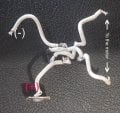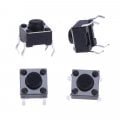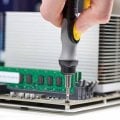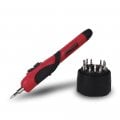Hello Guys,
I would like to convert the cordless screwdriver switch from sliding to press type.
The sliding-type switch is a bit difficult in precision screwdriving use. So I need it into a press button switch.
And tried it, following the actual switch wiring layout. But the problem is; the battery connectors are always short and showing continuity.
Pls find the attached pictures for the wiring I have followed and it's not working!!!
Kindly anyone can show me where is it getting messed
Thank you.
I would like to convert the cordless screwdriver switch from sliding to press type.
The sliding-type switch is a bit difficult in precision screwdriving use. So I need it into a press button switch.
And tried it, following the actual switch wiring layout. But the problem is; the battery connectors are always short and showing continuity.
Pls find the attached pictures for the wiring I have followed and it's not working!!!
Kindly anyone can show me where is it getting messed
Thank you.
Attachments
-
174 KB Views: 17
-
173.5 KB Views: 17
-
290.5 KB Views: 16
-
289.1 KB Views: 17
Last edited:

















